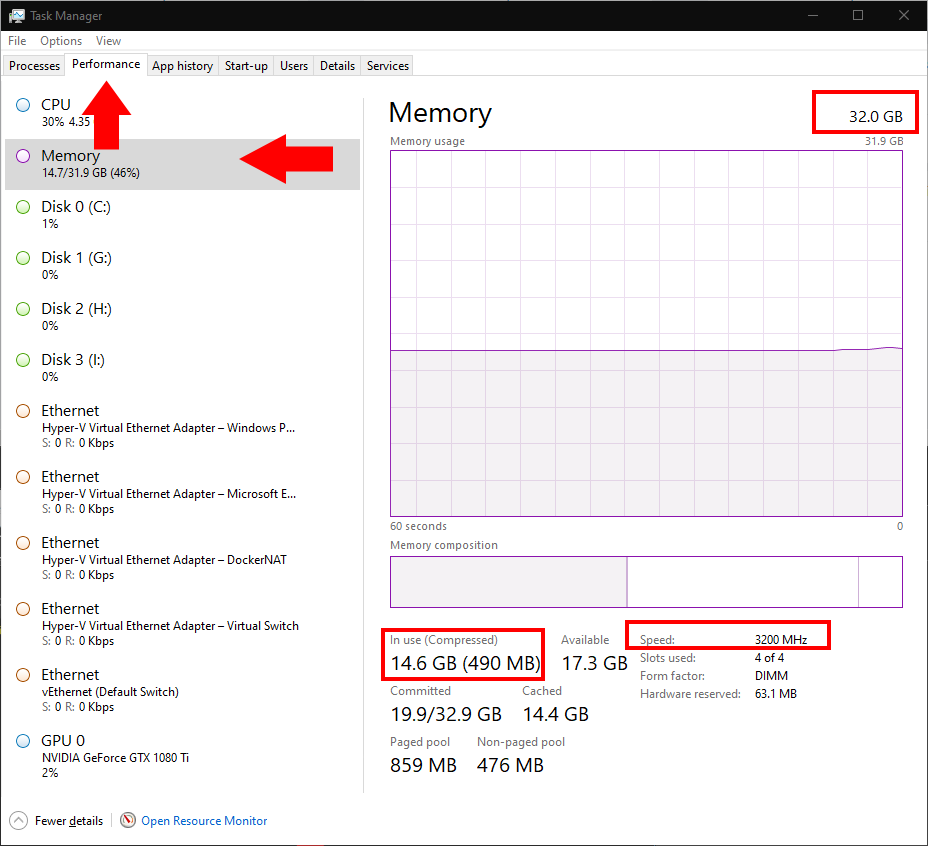
Tasks: 99 total, 2 running, 55 sleeping, 0 stopped, 0 zombie
Or, run top, and press m to display total and available memory. Open a terminal and run free -h to view memory stats, including total RAM and swap.įree -h total used free shared buff/cache available. To view the total memory on a computer running Linux, use the free or top commands. The system overview is displayed, including the amount of RAM installed. In the Apple menu, select About this Mac. In the menu bar, click the Apple icon to open the Apple menu. To view the total memory on a computer running macOS, follow these steps. Click Memory on the left side to see how much memory is used under the In use (Compressed) label, and what's available under the Available label. On the Performance tab, you can see an overall picture of all the system resources. On the Processes tab, you can see which programs are running and using resources. To determine the amount of available system resources, including memory, and what is currently being utilized, open the Task Manager. 
 Under System, click View amount of RAM and processor speed. In the Search box, type ram and click the Show how much RAM is on this computer entry in the search results. If the computer does not recognize the memory, it's not included in the "Installed memory (RAM)" entry in the System Properties window.
Under System, click View amount of RAM and processor speed. In the Search box, type ram and click the Show how much RAM is on this computer entry in the search results. If the computer does not recognize the memory, it's not included in the "Installed memory (RAM)" entry in the System Properties window. 
For example, in the picture below, there is 4 GB of memory installed in the computer.
In the System Properties window, the Installed memory (RAM) entry displays the total amount of RAM installed in the computer. Press the Windows key, type Properties, and then press Enter. :max_bytes(150000):strip_icc()/Rectangle91-a287eb735f3d46b09e797c48c3057492.jpg)
To view the total memory on a computer running Windows 7 or Windows Vista, follow these steps. If the computer does not recognize the memory, it's not included in the "Installed memory (RAM)" or "Installed RAM" entry in the System Properties window.





:max_bytes(150000):strip_icc()/Rectangle91-a287eb735f3d46b09e797c48c3057492.jpg)


 0 kommentar(er)
0 kommentar(er)
